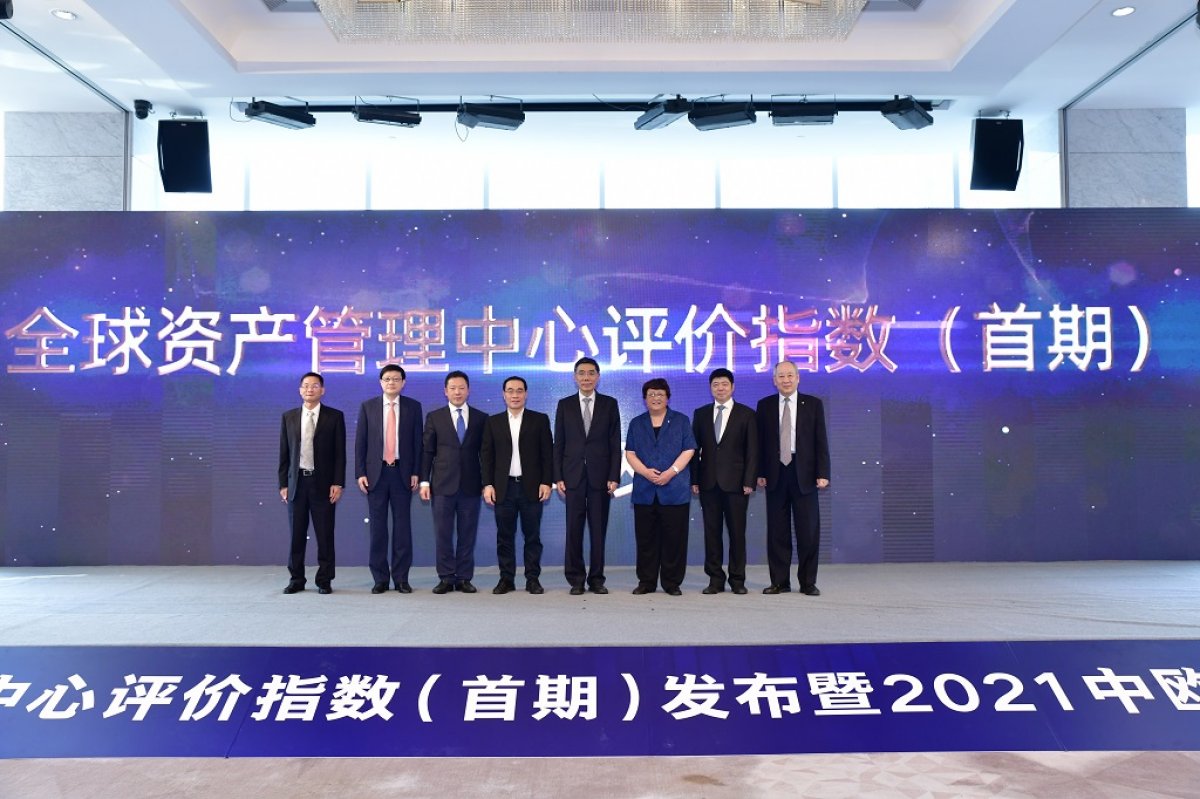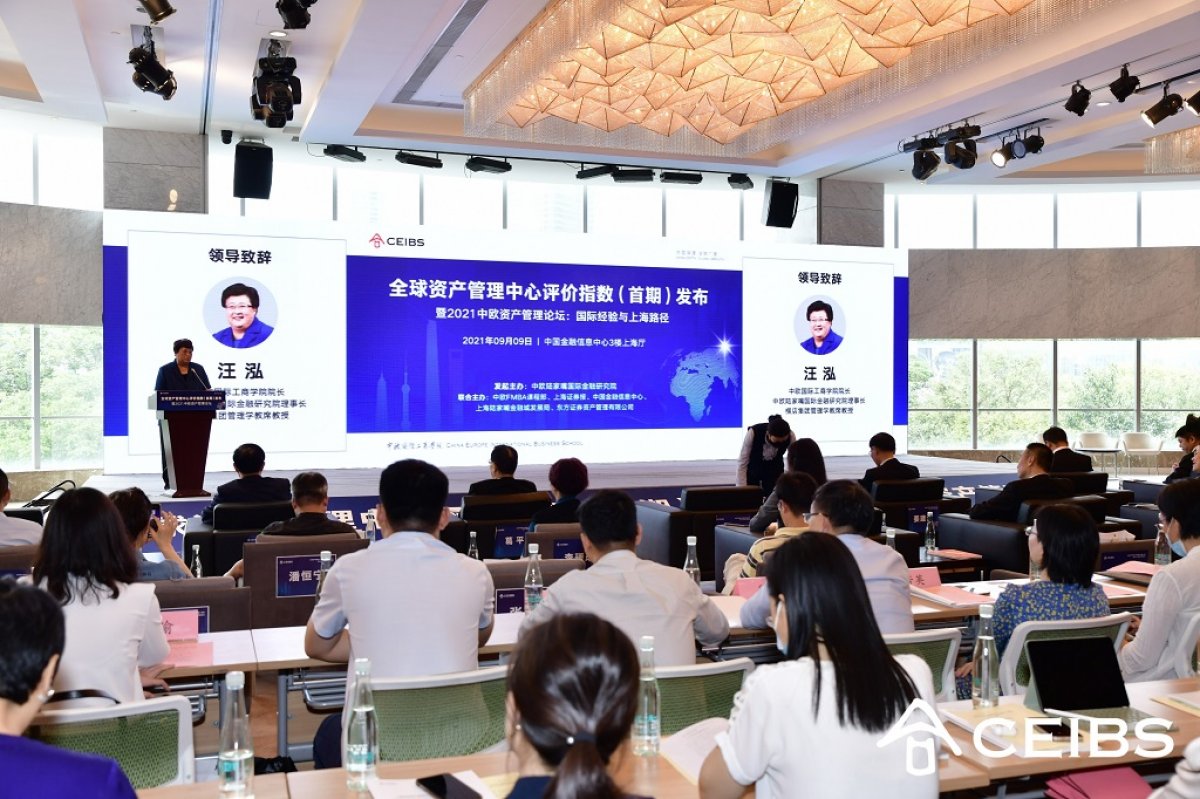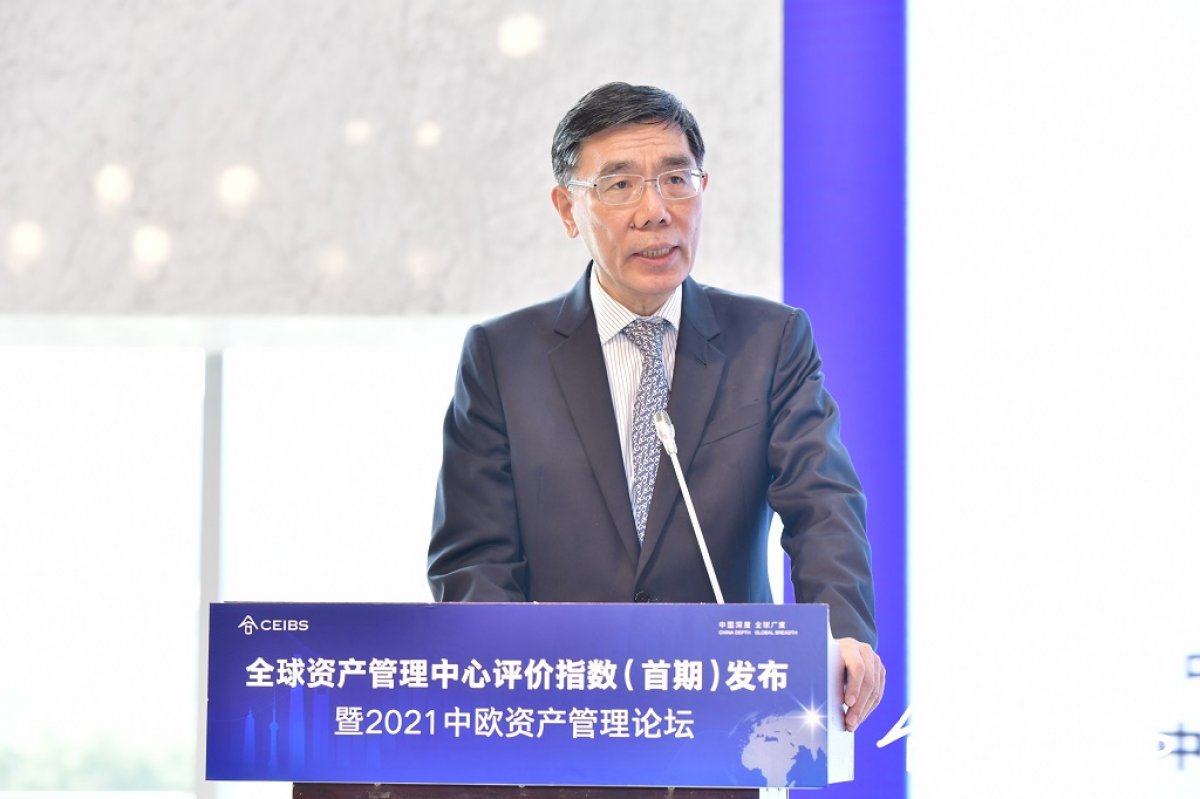Shanghai amongst world’s top asset management centres
September 9, 2021. Shanghai – Shanghai is amongst the top asset management centres in the world, according to a new report by the CEIBS Lujiazui Institute of International Finance (CLIIF).
The Global Asset Management Centre Evaluation Index is based on the analysis of 30 major financial centres around the world and takes into consideration factors such as available assets, infrastructure, talent and services and level of competitiveness.
New York, London and Boston topped this year’s list, with Shanghai coming in eighth. Hong Kong, Singapore, Paris, Los Angeles, Chicago and Tokyo also made the top ten.
The project was led by CLIIF Chairman Jiang Jianqing and CLIIF Executive Deputy Director Sheng Songcheng and compiled with the help of industry experts. The index was officially unveiled today at the 2021 CEIBS Asset Management Forum.
During the event, CEIBS President Wang Hong stated that the establishment of Lujiazui as a global asset management centre is of major strategic significance to Shanghai. She also added that the Global Asset Management Centre Evaluation Index can serve as an important barometer for the industry.
Prof. Sheng further noted that the purpose of index is to both track the development of the global asset management industry and to help identify the gap between Shanghai and other global leaders.
In particular, he said that, in order to achieve its aim of becoming one of the top asset management centres in the world, Shanghai should continue to develop institutions to promote new, innovative products (such as a green assets management products), introduce more capital and expand on overseas investment opportunities.
In his speech, Prof. Jiang pointed out that the asset management business has become a new bright spot in China’s financial market. He added that the opportunities and challenges facing the industry stem from five main aspects:
- First, the demand created by sustainable development initiatives, the Yangtze River Delta region and cross-border investment;
- Second, China’s huge accumulation of personal wealth (expected to reach 332 trillion RMB by 2025) and diversified financial needs;
- Third, people’s growing desire to balance the security, profitability and liquidity of their asset portfolios;
- Fourth, the impact of big data, artificial intelligence and other technological innovations on financial services models; and,
- Fifth, China’s continued opening up and the globalisation of asset allocations.
Finally, Prof. Jiang said he believes that the development of the global financial industry through high capital consumption is unsustainable. He also suggested that Chinese financial institutions promote the overall transformation of their businesses and return to their core business and asset management.
Since its establishment more than ten years ago, CLIIF has played as an important role as a think tank in supporting the development of Shanghai’s financial market. CEIBS’ Finance MBA programme has also trained more than 1,000 mid- and high-level talents with both “financial depth” and “managerial breadth,” many of whom now work in the Lujiazui financial district.




















